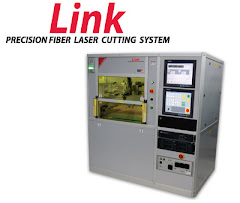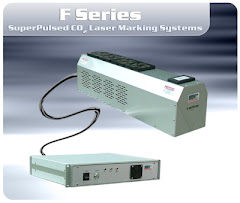Laser marking on stainless steel with a CO2 laser is very timely and messy process. Due to the reflective nature of the metal surface and the operational wavelength, CO2 laser systems require a laser marking material (LMM,) to permanently mark the surface. The LMM is sprayed onto the surface and has to be allowed to dry before marking. The surface also has to be cleaned after marking. All of this work makes the alternative, Fiber Lasers, very appealing.
Fiber Laser Marking on Stainless Steel

Q-Switched Fiber Lasers are ideal for marking on stainless steel and other metals, as no LMM is needed.
For this application, Laser Photonics applications engineers used the FiberTower XP Compact system with a 20 Watt Q-Switched Fiber Laser equipped with a 160mm F-theta Lens. The stainless steel sample parts were marked at a depth of approximately .001, using the process of surface etching. The mark is etched by vaporizing the surface of the material at very high speeds, providing very minimal damage to the part. This is usually done when a quick mark is needed and cycle time is an issue. A surface etch gives a high contrasting mark and is ideal for marking on coatings without penetrating through, such as chrome, nickel, etc. Several marks were made by our engineers. The first mark was made in one pass to show optimum cycle time of 12.5 seconds, which is 5 inches per second. The goal of the application was to process the best quality samples while maintaining an acceptable cycle time.
For Other Applications - Browse Laser Photonics' Applications Database!
For Other Applications - Browse Laser Photonics' Applications Database!
Try Before You Buy! Did you know Laser Photonics will process your samples according to your specifications for FREE? Simply send us several samples of your product with a complete description of your marking or cutting requirements. Your processed parts, together with a detailed applications report and equipment recommendations will be returned to you at no charge.





.jpg)
Clr09_400px.jpg)





No comments:
Post a Comment